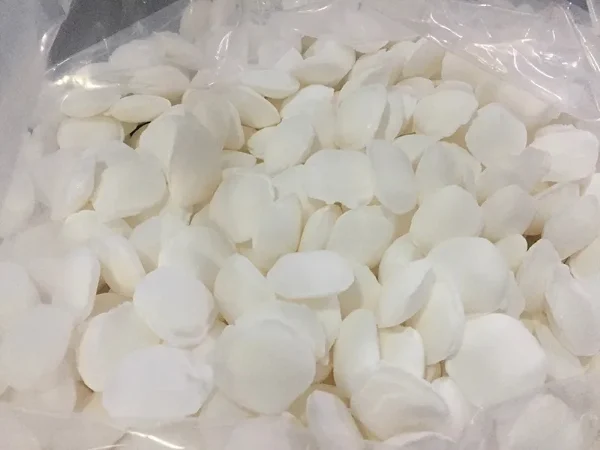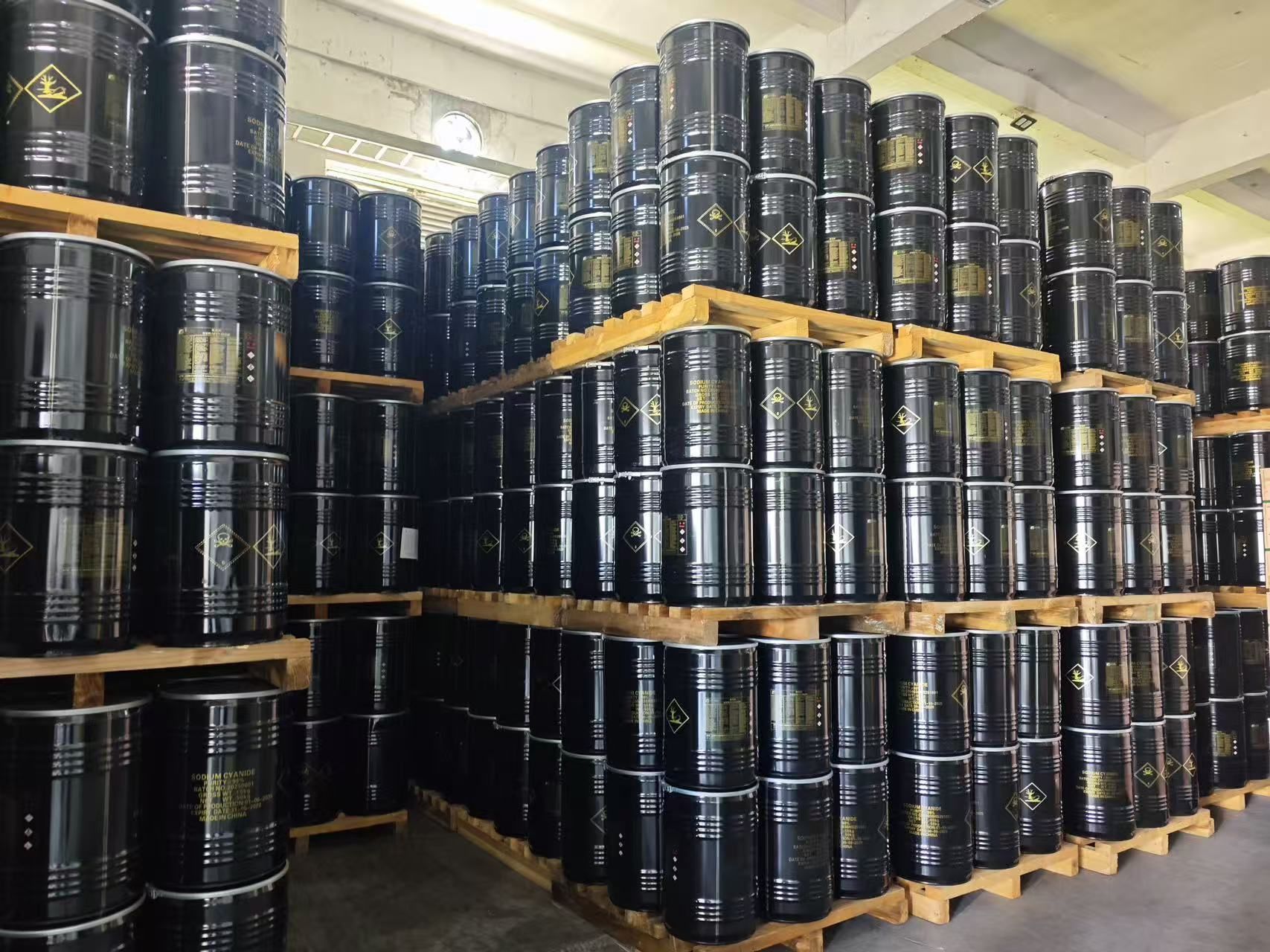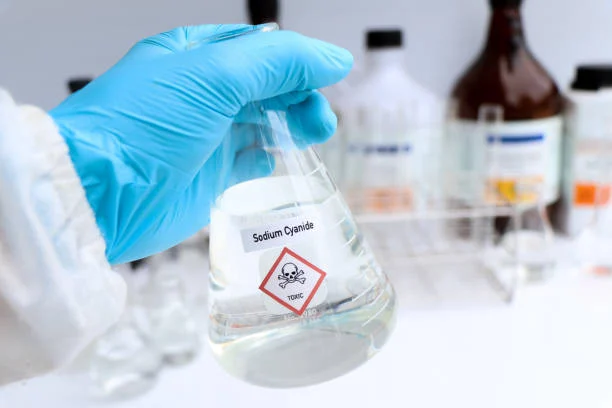
Introduction
Sodium cyanide, with the chemical formula NaCN, is a compound that has a significant place in both industrial applications and the realm of toxicology. It is a white, crystalline solid that is highly soluble in water. Due to its chemical properties, especially the presence of the cyanide ion (CN-), Sodium Cyanide exhibits extreme toxicity, which has far - reaching implications for human health.
Chemical Properties of Sodium Cyanide
Sodium cyanide is a salt composed of sodium cations (Na+) and cyanide anions (CN-). It has a molar mass of approximately 49.01 g/mol. In aqueous solutions, it dissociates into these ions. The cyanide ion is the key component responsible for its toxicity. It is a strong nucleophile and has a high affinity for metal ions, which plays a crucial role in both its Industrial uses and its harmful effects on biological systems.
Industrial Uses of Sodium Cyanide
1.Mining Industry
Sodium cyanide is extensively used in the extraction of gold and other precious metals. In the process of gold Mining, it forms complexes with gold, allowing the metal to be dissolved and separated from the ore. This method, known as cyanidation, is widely employed due to its efficiency and relatively low cost. For example, in a typical gold - cyanide reaction, gold (Au) reacts with sodium cyanide (NaCN), oxygen (O₂), and water (H₂O) to form a soluble gold - cyanide complex: 4Au + 8NaCN+O₂ + 2H₂O→4Na[Au(CN)₂]+4NaOH.
2.Chemical Synthesis
It serves as a fundamental building block in the synthesis of various organic and inorganic compounds. In the production of nitriles, which are important intermediates in the synthesis of pharmaceuticals, agrochemicals, and polymers, Sodium cyanide is often used. For instance, in the synthesis of acrylonitrile (a monomer for making synthetic fibers like acrylic), the reaction may involve sodium cyanide as a reactant in certain synthetic routes.
3.Electroplating
Cyanide - based electrolytes, often containing sodium cyanide, are used in Electroplating processes. The cyanide ions help in the deposition of metals such as copper, silver, and zinc in a more uniform and adherent manner. This is because cyanide can form stable complexes with metal ions, controlling the rate of metal deposition during electroplating.
How Sodium Cyanide Affects Human Health
1.Toxicokinetics
When sodium cyanide enters the human body, it can be absorbed through multiple routes. Inhalation of dust or fumes containing sodium cyanide allows the cyanide ions to rapidly enter the bloodstream through the alveoli in the lungs. Ingestion, either accidentally or in cases of poisoning, leads to absorption in the gastrointestinal tract. Skin contact can also result in absorption, although the intact skin provides some barrier protection. Once in the bloodstream, the cyanide ions are distributed throughout the body.
2.Mechanism of Toxicity
The primary target of cyanide toxicity in the human body is the mitochondrial cytochrome c oxidase, which is a key enzyme in the electron transport chain of cellular respiration. Cyanide binds to the iron (Fe) in the cytochrome c oxidase complex with high affinity. This binding inhibits the transfer of electrons from cytochrome c to oxygen, effectively blocking the final step of aerobic respiration. As a result, cells are unable to generate adenosine triphosphate (ATP) through oxidative phosphorylation, leading to cellular energy deprivation.
Additionally, cyanide can also affect other iron - containing enzymes in the body, further disrupting normal metabolic processes. For example, it can interfere with the function of myoglobin, which is involved in oxygen storage in muscle cells, and certain peroxidases that are important for antioxidant defense mechanisms.
3.Acute Toxicity
Low - Dose Exposure
Even at relatively low doses, exposure to sodium cyanide can cause a range of symptoms. Initial signs may include headache, dizziness, weakness, and nausea. The victim may also experience a feeling of tightness in the chest and shortness of breath. In some cases, there may be a characteristic "almond - like" odor to the breath, although not everyone can detect this smell.
High - Dose Exposure
High - dose exposure to sodium cyanide can be rapidly fatal. Symptoms progress rapidly to severe respiratory distress, with rapid and labored breathing. Cardiovascular effects include a drop in blood pressure, irregular heart rhythms (arrhythmias), and ultimately cardiac arrest. Neurologically, the victim may experience seizures, loss of consciousness, and coma. In extreme cases, death can occur within minutes of a large - dose exposure.
4.Chronic Toxicity
Prolonged exposure to low levels of sodium cyanide, such as in certain industrial settings where there is poor occupational hygiene, can lead to chronic health problems. Chronic exposure may cause weakness, fatigue, and weight loss. It can also affect the nervous system, resulting in symptoms such as numbness and tingling in the extremities, memory impairment, and difficulty concentrating. Additionally, repeated exposure may have an impact on the thyroid gland, as cyanide can interfere with iodine uptake and thyroid hormone synthesis.
5.Effects on Specific Organs
Respiratory System
The respiratory system is one of the first to be affected by sodium cyanide exposure. As mentioned earlier, the inhibition of cytochrome c oxidase in the cells of the respiratory muscles and the central respiratory centers in the brain leads to impaired breathing. This can cause rapid breathing initially as the body tries to compensate for the lack of oxygen utilization, followed by respiratory depression and ultimately respiratory failure.
Cardiovascular System
Cyanide - induced cellular energy deficiency affects the heart muscle (myocardium). The heart may experience decreased contractility, leading to a reduced cardiac output. Arrhythmias can occur due to the disruption of normal electrical conduction in the heart. The combination of these effects can lead to a significant drop in blood pressure, which further compromises the delivery of oxygen and nutrients to the body's tissues.
Nervous System
The nervous system is highly sensitive to the effects of sodium cyanide. In addition to the acute effects of high - dose exposure such as seizures and coma, chronic exposure can lead to neurodegenerative changes. Neurons may experience damage due to energy deprivation and oxidative stress. This can result in long - term neurological deficits, including cognitive impairment, motor dysfunction, and sensory disturbances.
Digestive System
Ingestion of sodium cyanide can cause irritation and damage to the gastrointestinal tract. Symptoms may include nausea, vomiting, abdominal pain, and diarrhea. In severe cases, there may be damage to the mucosal lining of the stomach and intestines, leading to bleeding and ulceration.
Conclusion
Sodium cyanide, despite its important industrial applications, poses a significant threat to human health. Its extreme toxicity, both in acute and chronic exposure scenarios, can lead to a wide range of health problems, from mild symptoms to life - threatening conditions. Given its potential for harm, strict safety measures are essential in industries that use sodium cyanide. These measures include proper handling, storage, and disposal of the compound, as well as providing adequate protection and training for workers. Additionally, environmental monitoring is crucial to prevent the release of sodium cyanide into the environment, where it can also pose risks to human health through water and air pollution.
- Random Content
- Hot content
- Hot review content
- Collector BLK-301/Composite Flotating Active Matter ≥60%
- T-610 collector Salicyl oxime acid derivative Content 3.5%
- Cyanoacetic acid 99% Powder
- Triethanolamine(TEA)
- 2-Hydroxyethyl acrylate (HEA)
- Lithium chloride, 99.0%,99.5%
- Cupric Chloride 98%
- 1Discounted Sodium Cyanide (CAS: 143-33-9) for Mining - High Quality & Competitive Pricing
- 2China's New Regulations on Sodium Cyanide Exports and Guidance for International Buyers
- 3Sodium Cyanide 98% CAS 143-33-9 gold dressing agent Essential for Mining and Chemical Industries
- 4International Cyanide(Sodium cyanide) Management Code - Gold Mine Acceptance Standards
- 5China factory Sulfuric Acid 98%
- 6Anhydrous Oxalic acid 99.6% Industrial Grade
- 7Oxalic acid for mining 99.6%
- 1Sodium Cyanide 98% CAS 143-33-9 gold dressing agent Essential for Mining and Chemical Industries
- 2High Quality 99% Purity of Cyanuric chloride ISO 9001:2005 REACH Verified Producer
- 3Zinc chloride ZnCl2 for High Molecular Weight Polymers Initiator
- 4High Purity · Stable Performance · Higher Recovery — sodium cyanide for modern gold leaching
- 5High Quality Sodium Ferrocyanide / Sodium Hexacyanoferr
- 6Gold Ore Dressing Agent Safe Gold Extracting Agent Replace Sodium Cyanide
- 7Sodium Cyanide 98%+ CAS 143-33-9











Online message consultation
Add comment: